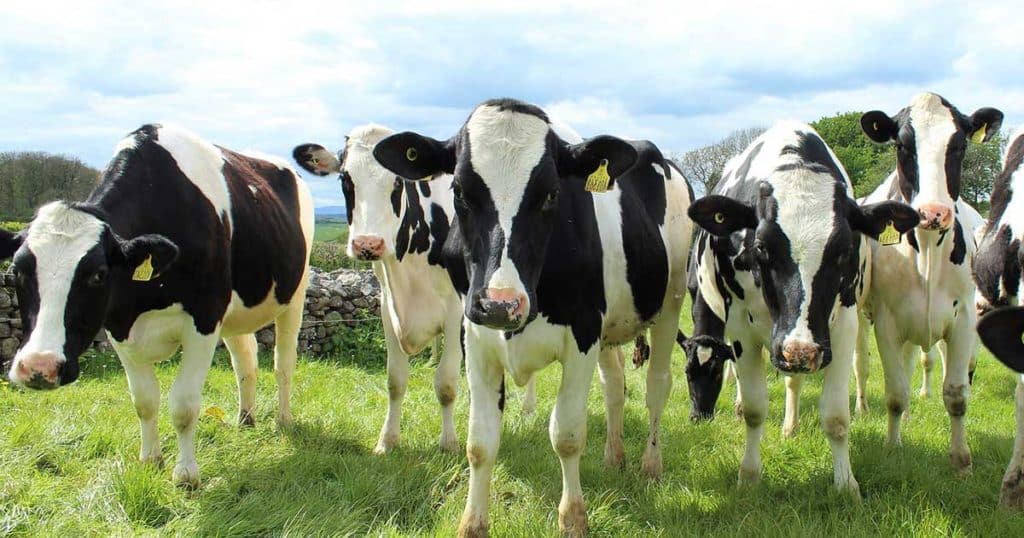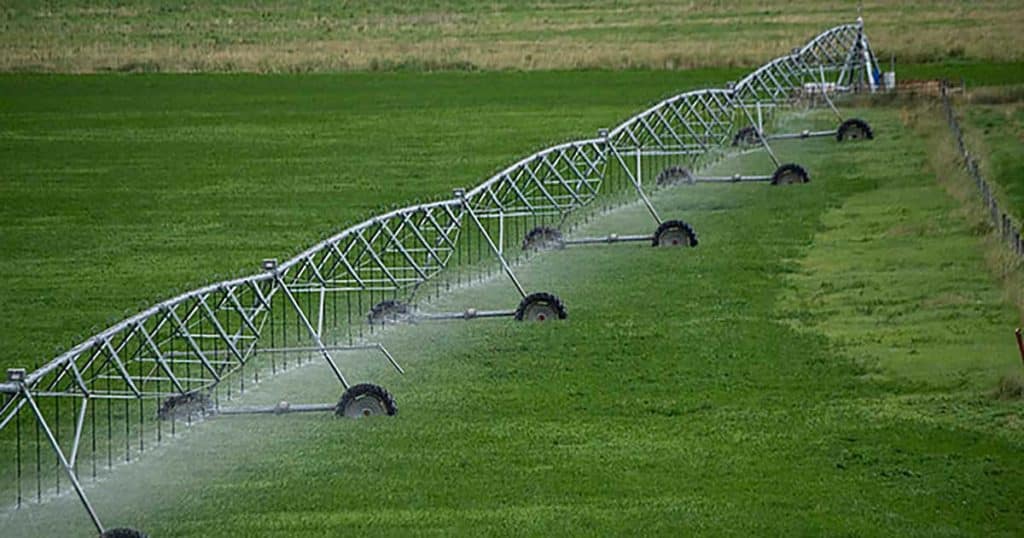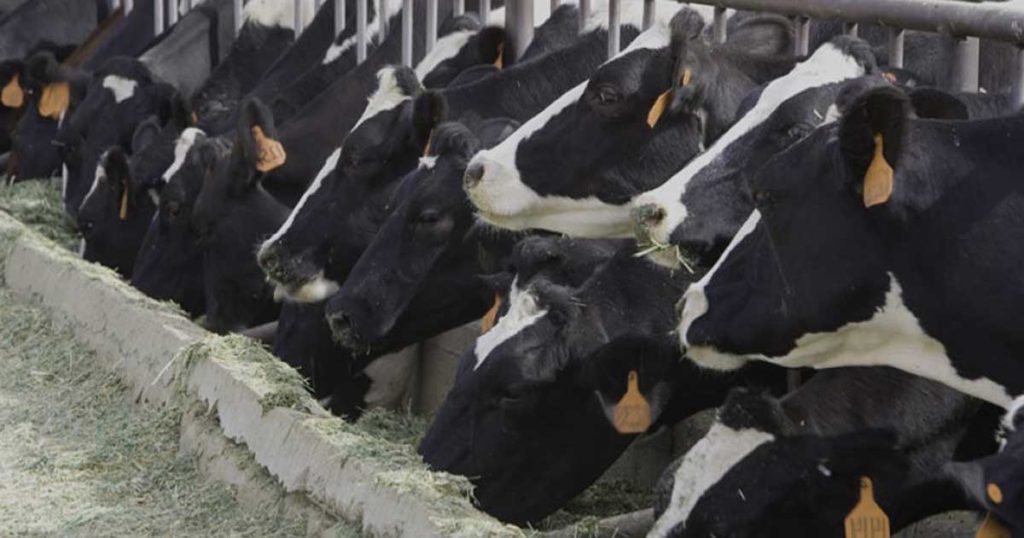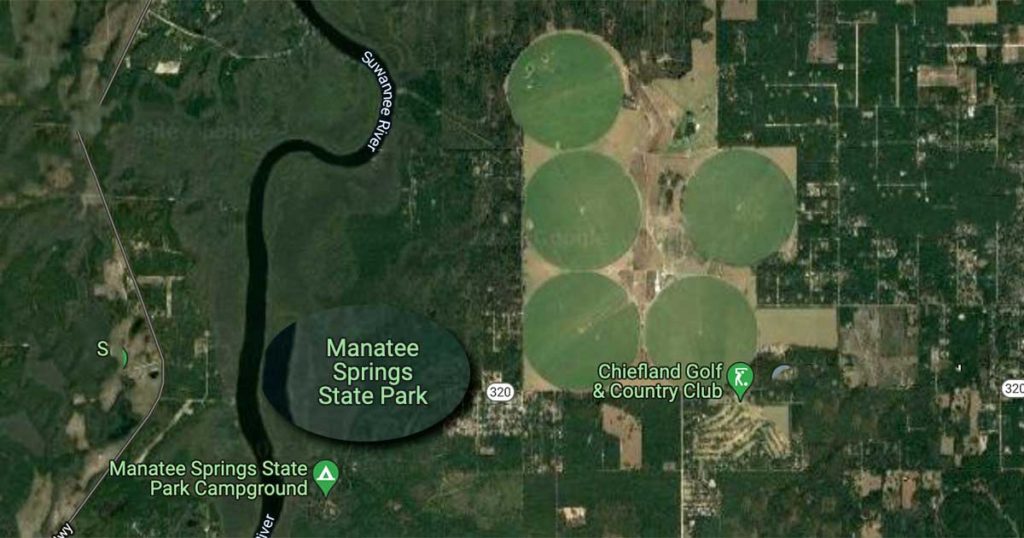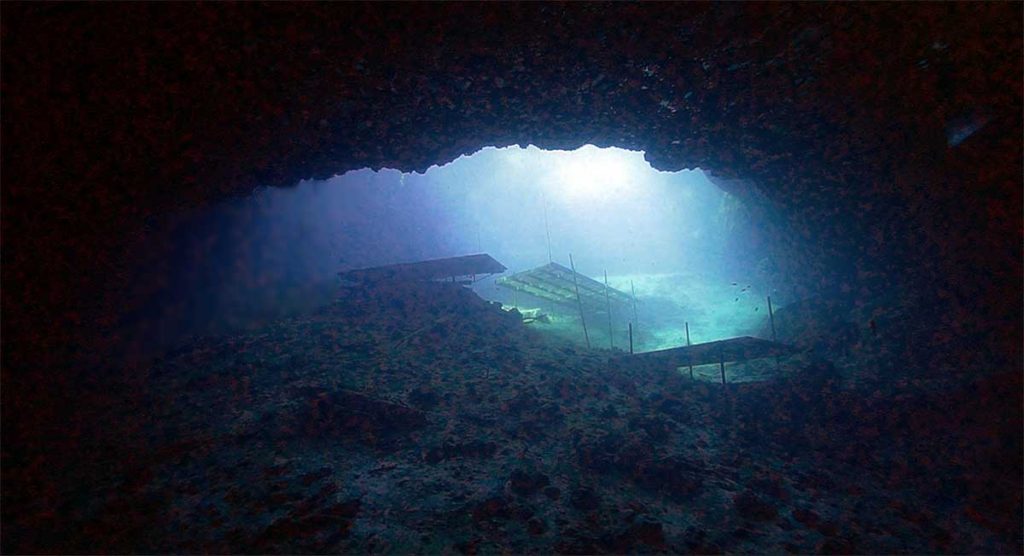Blue Grotto, along with a few other popular dive sites, has been largely spared from a problem affecting most of north-central Florida’s freshwater springs. It can still cause us issues; however, these issues are nowhere near as severe as they are at many other springs.
The issue is nitrate pollution and how it affects water quality and visibility. It’s an issue that every diver who visits north Florida should be aware of.
Not always this way
If you were lucky enough to visit most north-central Florida springs before 1980, you would characterize the water as “crystal clear” and “sky blue.” Today, very few springs match that description.
A good example is Troy Spring near Branford. In the 1970s, you could lie on the bottom at 70 feet, look up through sky-blue water and count the leaves on the trees overhead. Today that water will consistently be what one pundit referred to as “monkey vomit green.” Visibility has also suffered.
So, what happened?
If you were alive during the 1960s, you might remember the dire predictions of global starvation before the end of the century. This didn’t happen. There are still places on Earth where people starve, but nowhere near the scale predicted 50 years ago.
This is due, in part, to the efforts of Norman Borlaug. He won a Nobel prize in 1970 for developing a strain of weather-resistant wheat that saved millions of lives in India, Pakistan, Mexico and elsewhere.
Another factor in increasing crop yield is the widespread use of nitrate- and phosphate-based fertilizers.
When you see fields using large, mechanical irrigation devices, these are often used to fertilize crops.
A third factor, and the one that directly impacts our area, is the immense quantity of dairy cow manure deposited on the ground throughout the region.
Like a sponge
We tend to think of rock as being like granite or marble. These are impervious to water. In contrast, the limestone underlying north-central Florida is highly porous. If you pour a glass of water on a piece of limestone, the limestone will absorb it like a sponge.
What this means is that any water-soluble substance you place on top of the soil will be absorbed by the soil the next time it rains. This includes fertilizers and manure. From here, these contaminants will quickly work their way down into the aquifer.
A pernicious beast
The dairy industry has one of the most powerful lobbies in Washington. This is despite the fact that milk consumption has dropped by 40 percent since 1970.
In the mid-20th century, the dairy industry got the US government to promote the notion that we all need to consume a glass of milk with every meal. (We don’t.)
What many people don’t realize is that there is a significant downside to dairy farming. Unlike beef cattle, dairy cows produce a prodigious amount of manure. The typical dairy cow produces enough manure in a year to sink a 50-foot dive boat.
In theory, dairy farmers are supposed to scoop up manure as soon as it hits the ground and store it on plastic sheets until it can be properly disposed of. However, if it rains before this happens, all that manure and the nitrates it contains gets washed into the aquifer.
When this nitrate-rich water resurfaces in daylight, algae grows immediately. Many springs with high nitrate concentrations are just downstream from dairy farms or industrial-scale chicken farms. This is no coincidence.
Fertilizer, too
Manatee Spring, west of Chiefland, has among the highest concentrations of nitrates of any Florida Spring. You can see its impact in the basin at Catfish Hotel. Here a thick layer of gel-like algae creates the appearance of an alien landscape — and a rather scary one at that.
The offset sinkhole at Catfish Hotel and the nearby basin at Manatee Spring used to be home to hundreds of healthy catfish. However, as nitrate levels have risen, the catfish have disappeared. This is not a sign of a healthy spring.
If you look on Google Maps, you see that the area upstream of Manatee Spring contains agricultural fields where mechanical irrigation equipment dumps thousands of tons of fertilizer on the ground yearly. This is widely believed to be the source of the high nitrate levels in the water.
We got lucky
Groundwater flow in the Williston area moves from northeast to southwest. If you look at Google Maps, you’ll see that the area upstream of Blue Grotto is largely devoid of dairy farms and industrial-scale agriculture. This is most likely why our nitrate levels are so low.
It doesn’t mean that we’ve totally dodged a bullet. If the groundwater flow stops, water will remain in our open-water basic long enough to warm up. If the normally 72° F water rises just a few degrees, we can get the Algae Bloom from Hell. Fortunately, this happens rarely.
For the most part, Blue Grotto has been spared from the environmental devastation affecting so many other Florida Springs. It’s something we are very thankful for.


